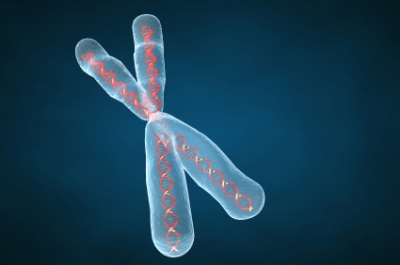Autism Model in Mice Linked With Genetics
UC San Francisco Study Makes Significant Progress Toward Mouse Model of Human Autism, Researchers Say

For the first time, researchers have linked autism in a mouse model of the disease with abnormalities in specific regions of the animals’ chromosomes.
The regions contain genes associated with aberrant brain development and activity.
“These discoveries in mice may eventually pave the way towards understanding autism in human patients and devising new treatments,” said co-senior author, Elliott H. Sherr, MD, PhD, a pediatric neurologist at UCSF Benioff Children's Hospital and professor of neurology at UC San Francisco (UCSF).
The findings are reported in a study published on April 15 in PLOS One.
The scientists bred a group of normal mice with a line of genetically modified mice that exhibit behaviors which are the mouse equivalent of autism. The 400 descendants of that crossbreeding, explained Sherr, “had a random assortment of genetics – some normal and healthy, some aberrant.”
The scientists exhaustively observed and recorded the behavior of each descendant mouse. Since each animal’s genetic makeup was already known, the researchers were able to pinpoint associations between specific autistic behaviors and specific chromosomal regions.

Elliott H. Sherr, MD, PhD
“This allowed us to say which regions we think contain the genes that contribute to which behavior,” said Sherr.
Sherr noted that those regions “contain genes that are already known to cause autism in humans, or are involved in brain development in such a way that makes it likely that they can cause autism.”
To test for autistic behavior, the mice were put in the middle chamber of an enclosure with three chambers. In the chamber on one side was another mouse; in the other, an inanimate object. “Mice are social animals, so a normal mouse would spend much more time in the chamber with the other mouse,” said Sherr. “An autistic mouse would spend more time with the object, or equal time with the object and the other mouse, because it didn’t care.”
The researchers also observed what the mice did when they were in a chamber together. “A healthy mouse will spend a lot of time sniffing or interacting with the other mouse, while an autistic mouse will roam around the chamber ignoring the other mouse as if it was inanimate,” said Sherr.
The research will have a number of potential benefits, he said, particularly once researchers pinpoint the exact locations of the genes on the chromosomes. “Having the genes means that you can begin to pick apart the connection between the genes and the actual behavior, and look at how the mutation on a gene might result in aberrant behavior. Having an animal model means that you can look at the anatomy in a more careful way, study the cells in a tissue culture dish and manipulate them in other ways.”
Scientists will also be able to test the effects of exposure to toxins and other substances on the development of autism, he said.
Eventually, said Sherr, “Having an animal model will let us test potential drugs to treat autism.”
Co-authors of the paper are co-primary author Dorothy M. Jones-Davis, PhD, of UCSF at the time of the study and currently with the National Science Foundation; co-primary author Mu Yang, PhD, of the National Institute of Mental Health, National Institutes of Health at the time of the study and currently with UC Davis; Eric Rider, Nathan C. Osbun, Gilberto J. da Gente and Jiang Li, PhD, of UCSF; Adam M. Katz and Michael D. Weber of NIMH; Saunak Sen, PhD, of UCSF; and co-senior author Jacqueline Crawley, PhD, of NIMH at the time of the study and currently with UCD.
The study was supported by funds from the National Institutes of Health (NS062173, NS052192 and K12 GM 081266) and Pfizer.